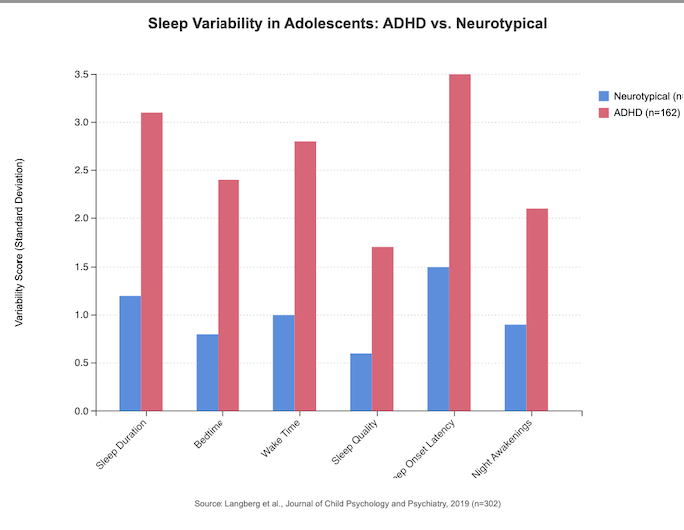Sleep, Unplug, Plan, Eat, Roam: A SUPER-Simple System
A friend emails me -
You've written a lot about different strategies for ADHD teens (or those who struggle with executive function more broadly). If you were to narrow it down into a big five, what would your non-negotiables be?
Yes, good question. We use SUPER as an acronym here.
In part to poke fun at the relentless rebranding of ADHD as a superpower, and in part earnestly that we believe that you need to sleep, unplug, plan, eat, roam.
S - SLEEP.
This is the foundation. It's hard. You want the same bedtime and wake time, plus or minus 30 minutes. You want to get your 8–9 hours. We find with our clients that a ritual can be exceptionally useful. Remember that without a ritual, you will (on average) have a HIGHLY uneven sleep experience:
We can’t recommend strongly enough: Get the phone completely out of the room. Ideally, it’s physically hard to access. If your room is upstairs, the phone’s downstairs. If your room is in the back, the phone is in the front. Many of our clients need a sibling or parent to help here. Whatever creates enough friction to help you stick with it.
For our ADHD clients: Consistent sleep is the single biggest lever on next-day focus, emotional regulation, and how well meds work (if you take them). If you’re dealing with dysregulation (and you are, if you’re an ADHD teen) this is a priority.
U- UNPLUG.
Modern life is bad for those who struggle with focus and attention. Devices are the central contribution to this. Once you accept this, you can fight back.
Start with boundaries around homework time and sleep time.
For homework, either use a real app blocker (try Freedom, Opal, Forest) or put your phone in a literal lockbox. Get it away from you.
For sleep time, have a hard cutoff of when you will cut off. We've found this is helpful if it's a household rule - everyone off screens by 9pm, say. Phone goes to a docking station in another room. Lights down, brain down.
Suggestively, there’s a dose-response curve: the more you’re on your phone at night, the worse your symptoms the next day.
P - PLAN
If it lives in your head, it’s already lost. You’ve got to offload some of that working memory as part of basic executive function hygiene. Again - you probably STRUGGLE with this. It's ok.
Doesn’t have to be a fancy system. Google Calendar. A whiteboard on your wall. A paper planner. Whatever works. But it’s got to be visible, and be updated regularly (ideally daily). We have a little app we use for this:
Find the “goldilocks” of how you like to schedule - whatever helps you’re doing today, tomorrow, and this week.
E - EAT
Eating is a self-regulation issue. Many of our clients forget to eat entirely, or find themselves impulsively eating. Often, it’s both.
Of course see your doctor for real advice here! But big picture we’ve found our clients need rhythm. Set regular meal times for breakfast, lunch, dinner. Same time every day, or close to it. Your brain likes to know when fuel is coming. It stabilizes blood sugar, supports attention, and helps meds work better.
You also need reminders. If you routinely skip meals, set alarms. Leave a sticky note. Tie it to another habit.
Regular eating can be incredibly difficult for the ADHD mind. When it gets chaotic, focus, mood, and even medication effectiveness can spiral. So get ahead of it. Make eating as predictable as you can bear.
R - ROAM
This is a mindset shift. Not just "get in a workout." Move throughout the day. Roam!
Yes, try to break a sweat (basketball, brisk walk, HIIT, whatever gets you going) but zoom out: your whole day is a workout. Start counting steps. Set a daily target and track it. Your real goal is to stop sitting still so much.
Nassim calls it "log-normal living."
The Hadza didn’t hit the gym for 45 minutes. They just moved constantly. That’s the game.
See Alan Couzens for how. Aim to minimize long bouts of sitting and maximize low-intensity movement, which could be standing, walking, low-key biking, chores. For the athletes and energizer bunnies: sure, get your higher-intensity work in. But for most ADHD teens, the goal is simple: move the body, move the mind.
Movement clears the fog, and can give you a free stimulant hit. There are a lot gains that come from just not being sedentary.
*
That’s our SUPER framework.




